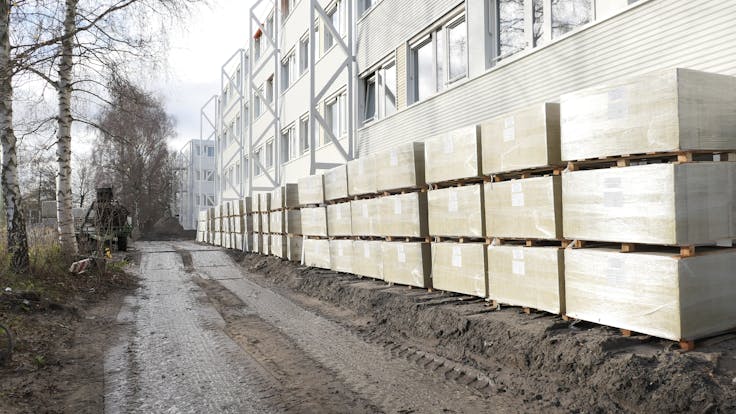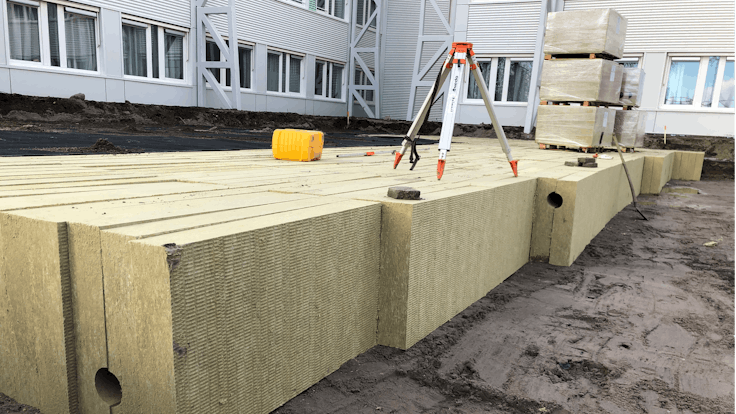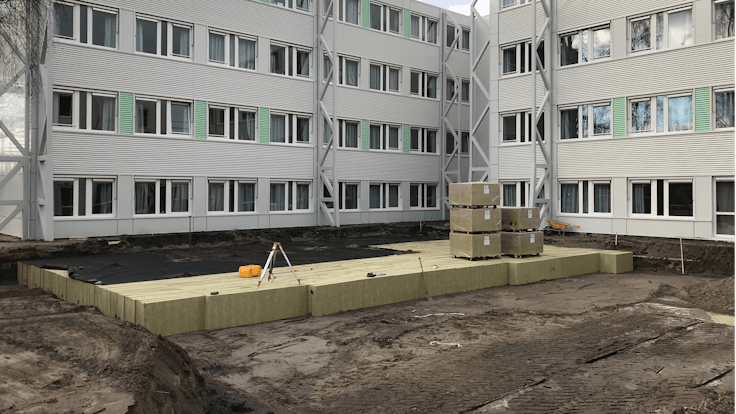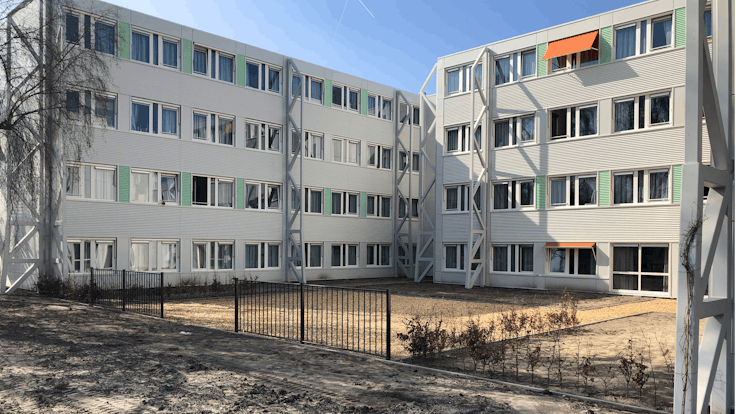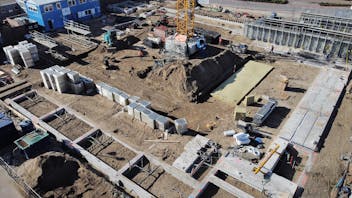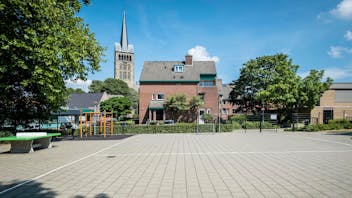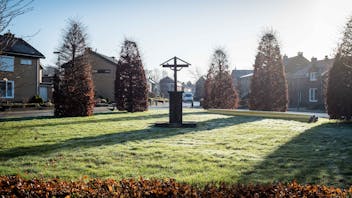Robust & future-proof solution
In addition to making the city ‘rainproof’, Amsterdam is also committed to sustainability. The underground system therefore also had to be produced sustainably and be fully re-usable after a 10-year period; cradle to cradle. The Rockflow water management system suited these requirements perfectly. The basis of the system consists of stone wool elements with a very high capacity to absorb and store water. Stone wool is a natural material made from basalt and is sustainably manufactured. It is also fully recyclable.
The major advantage compared to traditional plastic or concrete crate systems is that the Rockflow system can be easily adapted. And if, for example in the future, it is decided that a hole needs to be excavated for a tree to be planted in the centre of the inner garden, which is the location of the storage system, it will not pose any problem. Even though some of the stone wool will have to be removed, the system as a whole will remain intact, albeit with reduced capacity. Cables can also run through it, should that be necessary. With a crate system, this would result in leakage, run-off and eventual subsidence as a consequence. It is a robust and future-proof solution, regardless of current and future plans. The Rockflow elements are lightweight and easy to install. Despite the fact that the elements are lightweight, with the right ground cover they can withstand heavy loads. At the ‘Kruislaan’ location, an inner garden is being created above the stone wool elements. Heavy loads do not occur here, so a ground cover layer of 30 to 50 cm in thickness will suffice.
The Rockflow system
Water flows from various drains and gutters to the lowest section of the stone wool elements via a system of pipes. While the empty space between the stone wool fibres fills with water from beneath, the air is driven upwards via ventilation pipes.
According to the supplier, the elements absorb approximately 95% of their volume in water within 10 minutes, even at low pressure. This is partly due to the throughput speed of the water in the stone wool elements of approximately 200 metres per day.
The system can be designed in such a way that it empties entirely within 24 hours and is then ready for the next rainstorm.
Pilot project
This is the first Rockflow system to be installed in Amsterdam and is therefore viewed as a pilot project. Despite the fact that there isn’t much of long-term experience of this type of system in the Netherlands, project leader Cees Voorburg and geohydrologist Baukje Dijkstra of the municipality of Amsterdam’s engineering department are convinced of the benefits of the product and the system. This is particularly because in areas with intensive land use a combination of usage functions must be sought, in this case for water storage and an inner garden.


